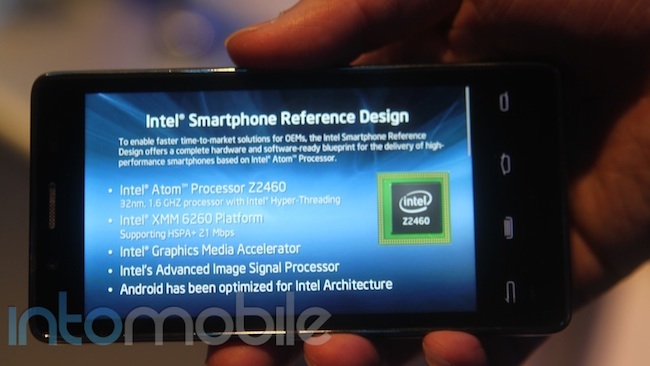This year, like every year for the past half decade, Intel announced that they’re going to make a processor that’s not only small enough to fit inside a mobile phone, but one that can compete with ARM in terms of power efficiency. What makes this year different though is that Intel announced a reference design and two companies who have agreed to make devices using their silicon. Motorola is one of those companies, Lenovo is the other, and the latter actually demoed a device on the show floor that’s based on said Intel reference platform. So just how good is Intel’s foray into the smartphone space? The folks from AnandTech got their hands on Intel’s reference design and ran some benchmarks on it. In short, it runs circles around the best Android device currently on the market, the Samsung Galaxy Nexus. What makes things interesting is that the Nexus runs Android 4.0 Ice Cream Sandwich, whereas Intel’s reference platform runs Android 2.3 Gingerbread. This means that when Intel eventually ports Ice Cream Sandwich to their hardware platform, all those software tweaks that improved performance from Android 2.3 to 4.0 are going to give them even more of a lead.

All that being said, we still remain skeptical about Intel based smartphones. Until we see one of the top tier vendors make a device with Intel’s chips inside, meaning either Apple, Nokia, or Samsung, then we can’t take Intel seriously. What ARM offers, besides a vast ecosystem of partners, is a roadmap that goes out several years. Plus there’s choice in the ARM space. Don’t like Qualcomm? Go with Samsung, or Texas Instruments, or Marvell, or ST-Ericsson, hell, be crazy and try MediaTek too. Intel’s got a lot of work in front of them, and we’re confident that they’ll eventually achieve their goal of penetrating mobile, but it’s not going to happen in 2012 and likely not in 2013 either.
